After the bone-chilling cold we had here in Georgia, a lot of people asked how to help the wildlife affected by the cold.
I’m going to talk about creating a wildlife habitat in your yard.
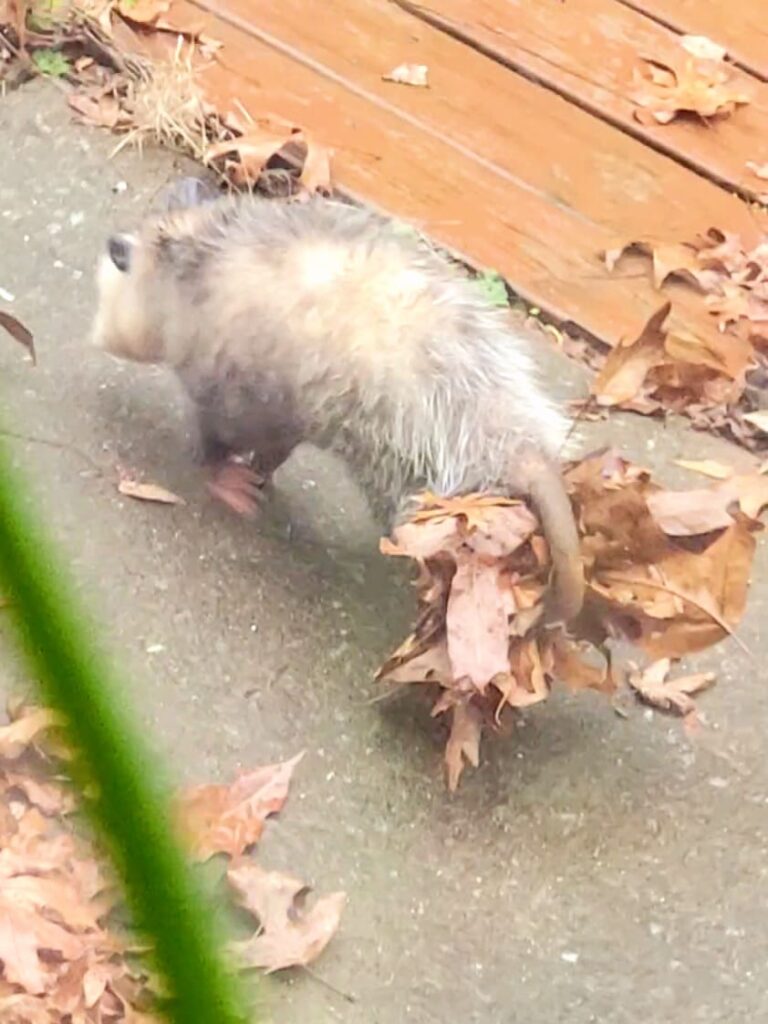
The opossum you see here is using her tail to gather leaves to line her nest.
She isn’t preparing it for her babies but to keep herself warm.
The main things you can do to create a wildlife habitat in your yard are to meet their needs for water, shelter and food.
Heated birdbaths
All animals need to drink and birds need to bathe year round. By providing water right there in your yard you are preventing them from having to travel far to quench their thirst. This is a great blog post explaining why birdbaths are needed in winter.
There are many ways you can keep fresh water available for birds and other wildlife. You can get a birdbath deicer to put in a birdbath or shallow tub, or you can use a heated pet bowl. If you use the heated pet bowl, which is what I recommend as it meets the needs of all wildlife, be sure to put rocks in for birds to land on.
As you can see in the video and the photo, birds love to bathe even in winter! Water is a critical ingredient for your wildlife habitat in your yard
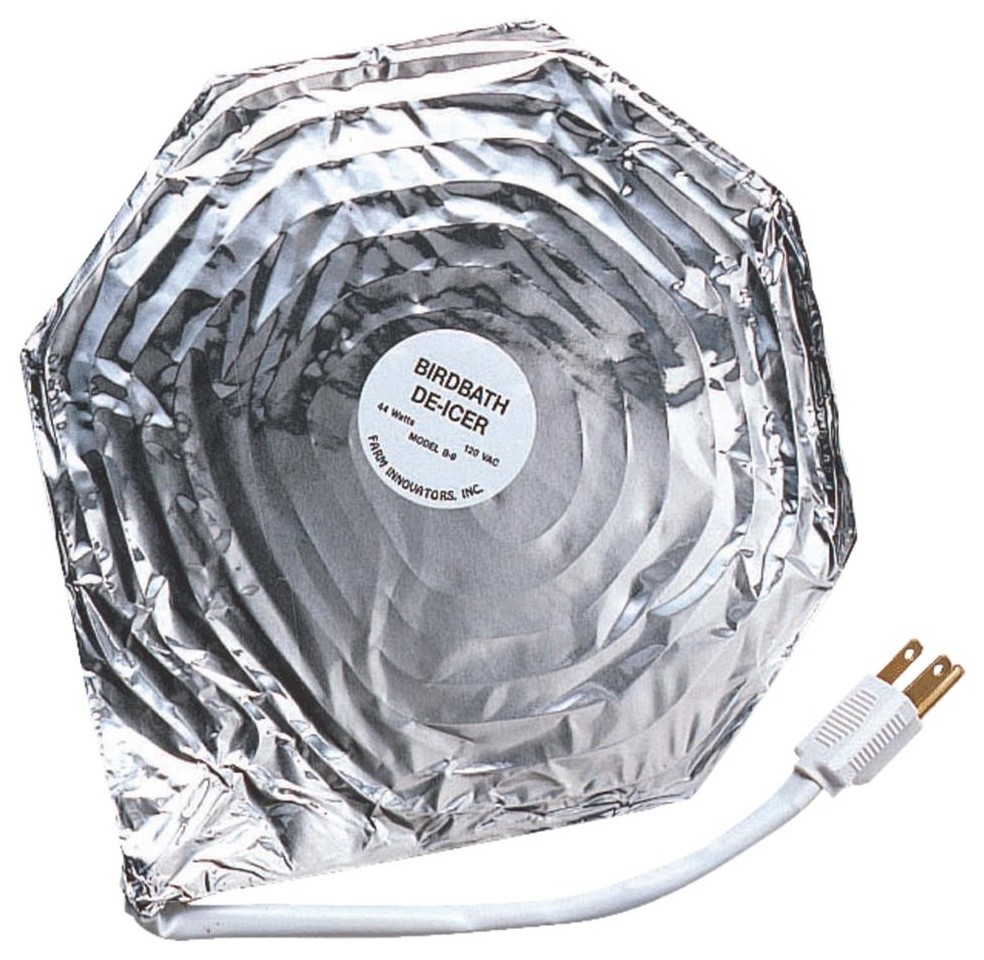
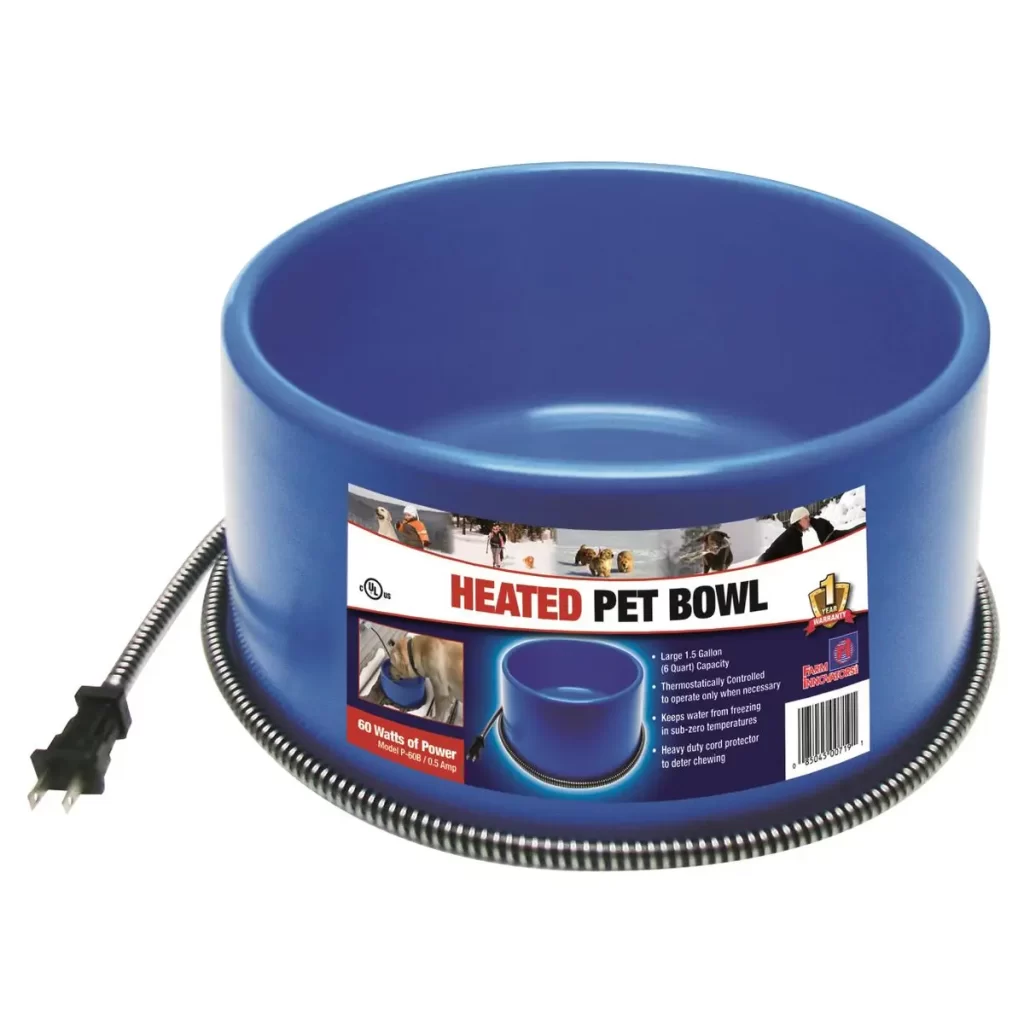
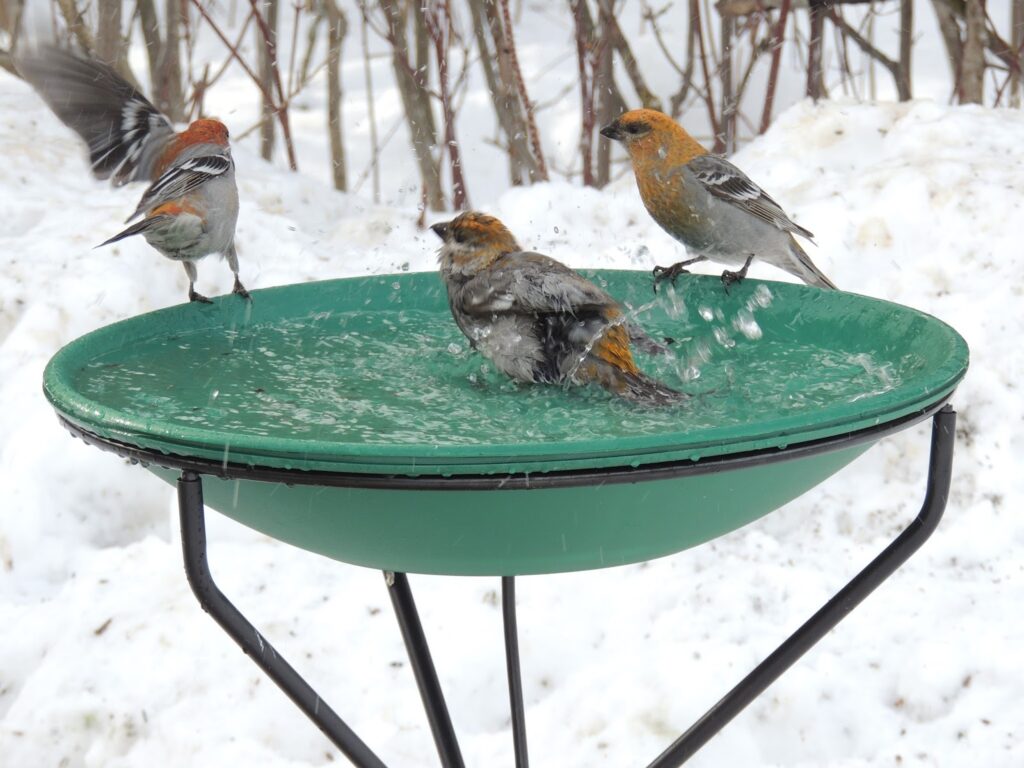
One advantage to providing water in your yard year round is watching the birds enjoy it.
Winter is generally a quiet time in the yard but by providing food, water and shelter you will attract many species.
Providing shelter
Shelter is another key need for a wildlife habitat in your yard
This can range from a homemade shelter, a brush pile, or even a heated cat house.
Position your Rubbermaid tote shelter or your heated cat house facing East so the wind doesn’t blow into it and it gets the morning sun.
Brush piles are a way to shelter animals from birds to opossums and they don’t cost anything but a little time!
Rake your leaves into a pile and place downed sticks or pruned branches in a layer on top.
If you create a brush pile that you will burn in the Spring, be sure to check for any animals that have built a nest inside, like bunnies.
The best way to do that is to move the pile stick by stick or rake one layer at a time, creating a new brush pile next to the old one. You will avoid any tragedies that way and animals can safely escape.
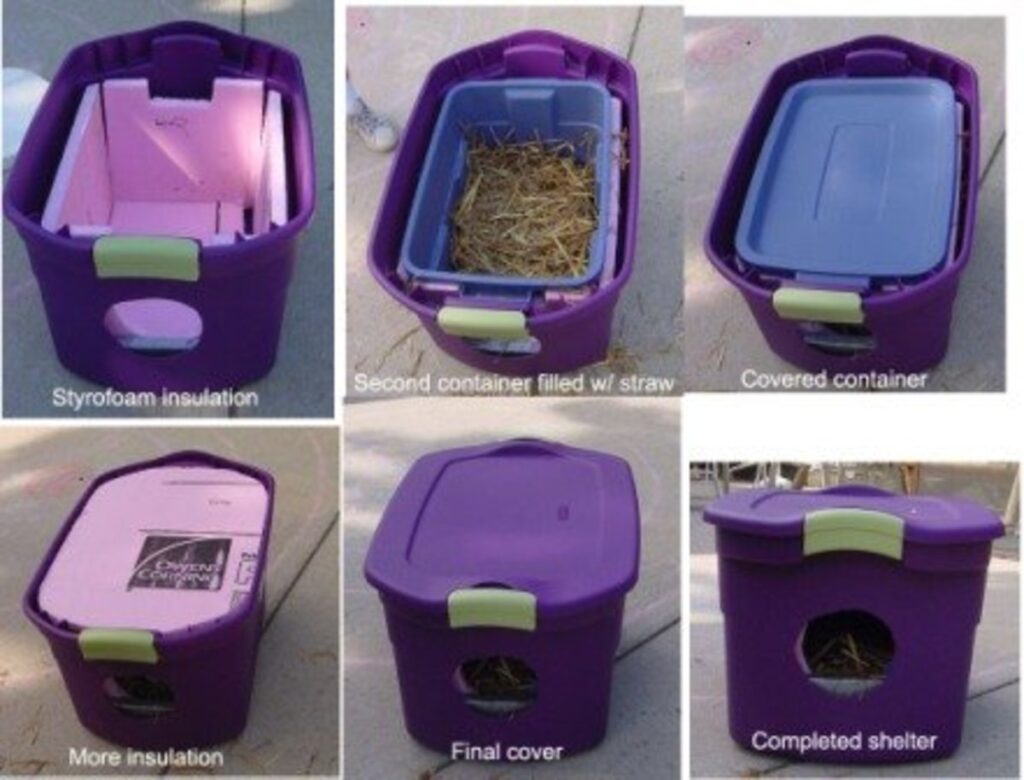
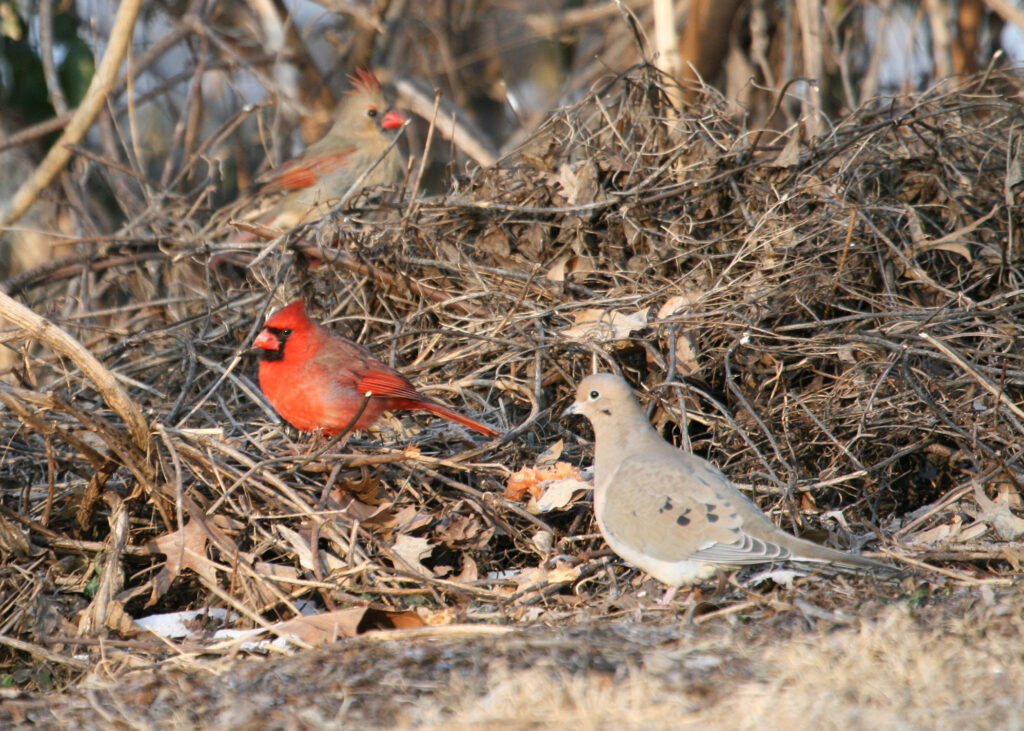

Build your own wild mammal and cat shelter
This video gives you detailed instructions on building the kind of shelter seen in the first photo.
While these are used mainly for feral cats, they work great for opossums, especially, who are caught out in the cold without a nest. Other species like raccoons usually have a permanent den.
Feeding wildlife
There is quite a debate on feeding wildlife. In some cases it is even illegal. This is because habituating wildlife can lead to multiple sad outcomes. Feeding the birds is a safe option- as long as you keep the feeders full.
If you have outside cats, feeding the birds is not a good idea as you are also creating a cat feeding station.
Opossums will eat spilled seed from under feeders, and may also check out your compost pile. You can see this fellow has discovered the platform feeder! Opossums will eat their fill and usually move on, but if they become regular visitors they will also eat bugs, slugs, mice and snakes in your yard.

Many people have noticed opossums and raccoons enjoying the cat food left out for outside cats or feral cats.
If you keep a heated pet bowl or other fresh water source, you will know you have a racoon because the water will become dirty overnight. This is because raccoons like to stick their paws in the water.
If you do leave out cat food, you will have regular wild visitors, even if you stop feeding them. They will continue to visit “just in case”, as you have habituated them to a food source. That is one reason why people do not leave cat food out.
Feeding corn to deer is not advised as it isn’t a healthy food for them and they will become dependent on it rather than browse the bark and twigs of the forest and field.
Suet for birds
Suet is a great way to feed all kinds of birds, including insect eaters like woodpeckers. It is a high energy food and enjoyed by nearly all winter bird species.
You can buy cakes of suet from a specialty store like Wild Birds, Unlimited, or your grocery store. Or you can make your own! This is a fun project to do with kids. I save the plastic containers commercial suet comes in to use as molds for homemade suet. The video on the right shows how to make your own.
The suet feeder in the picture is designed especially for woodpeckers. It is enjoyed by all birds, though. The extended bottom helps them balance their long tails.
I use woodpecker suet feeders and platform feeders in my yard. There are many feeders advertised as being squirrel-proof, but it is generally a battle of wits. I do not have squirrels in my yard, or at least they don’t visit my feeders, preferring to snack on the pecans and acorns from my trees.
Planting for wildlife
Planting trees and shrubs that feed wildlife is another great idea. Holly and Hawthorne berries stay on the trees through winter and are a welcome snack for many species. Pecan, walnut and oak provide energy-rich nuts. Fruit trees like apples and persimmon offer fresh and fallen foods for opossums and other mammals.
Cereal and seed plants like millet and sunflower also offer a nutritious, wild food for seed eaters.
You can buy trees and shrubs for wildlife from your local nursery or through your local forestry website. The Georgia website is https://gatrees.org/ and the list of available tree seedlings is here.
There are so many ways you can create wildlife habitat in your yard for little to no cost. Not only will you enjoy watching them, but you will support many of our native species.
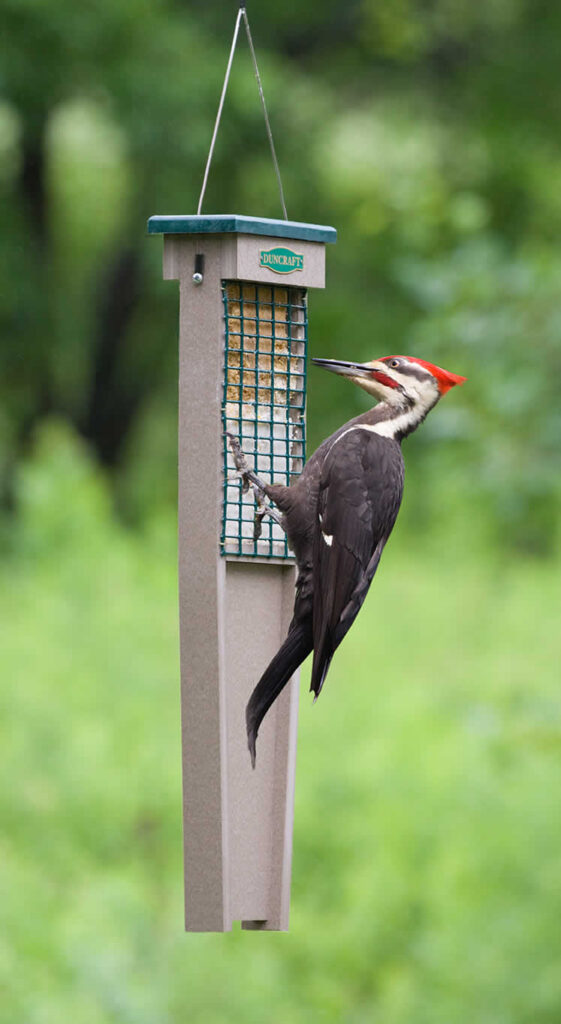
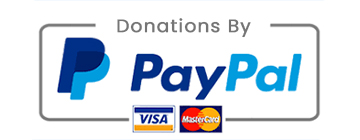
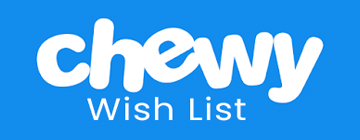


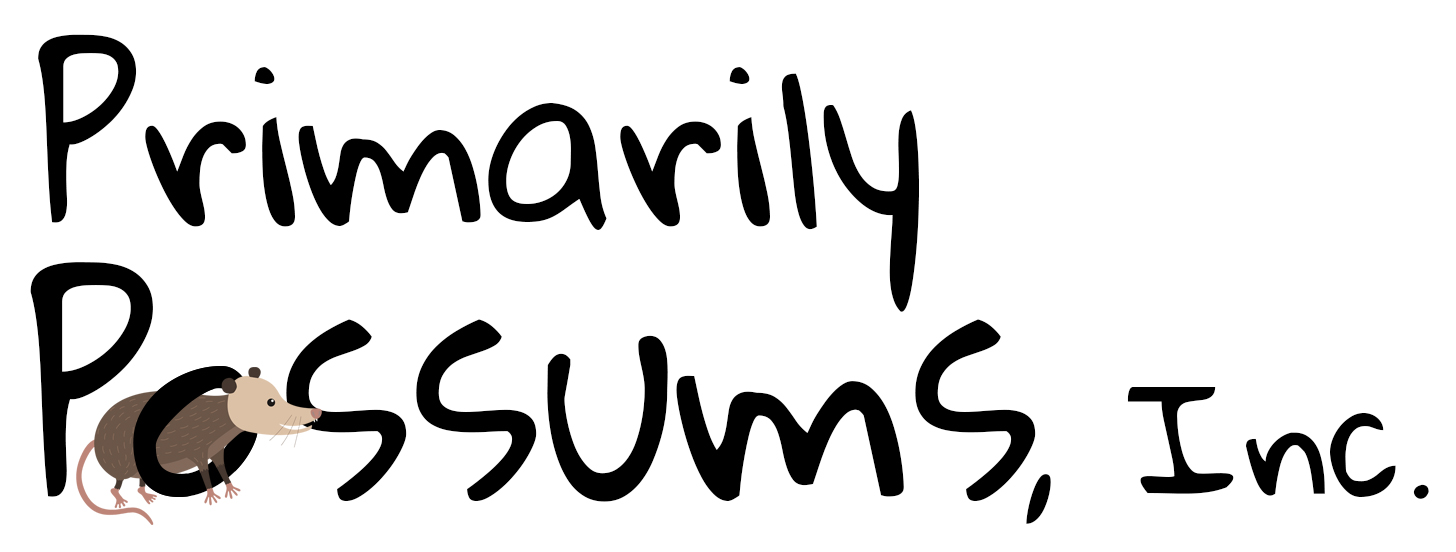
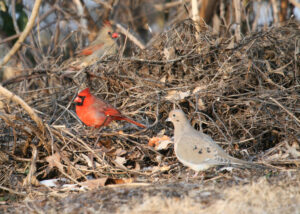
 2025 Sabbatical
2025 Sabbatical